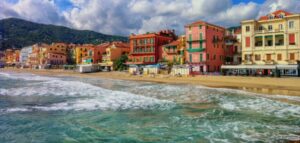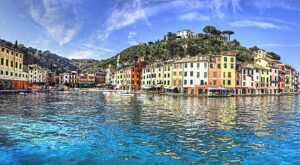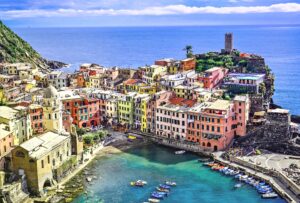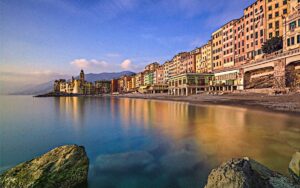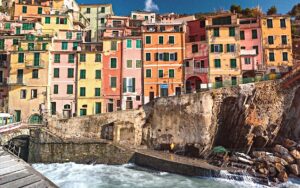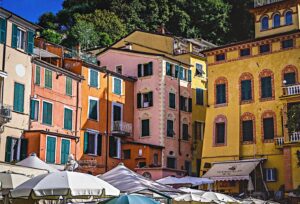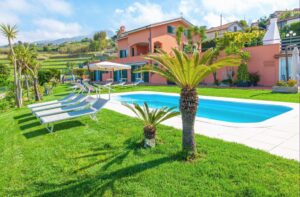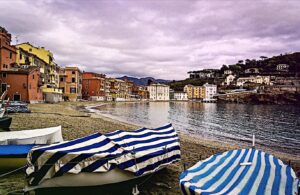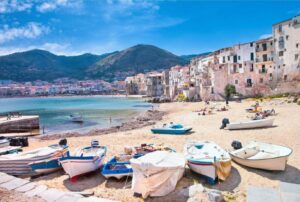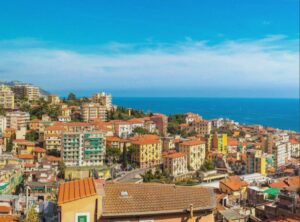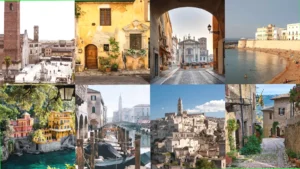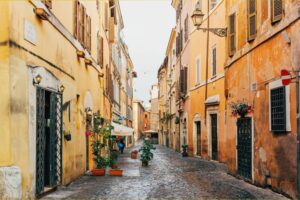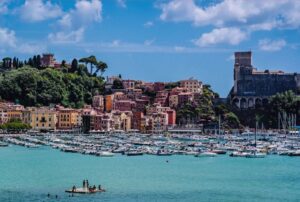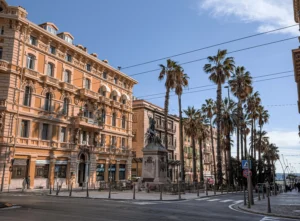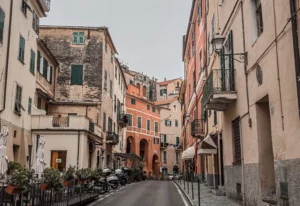What You Need to Know Before Investing in Italian Real Estate in 2023: The Risks and Rewards of Buying Property in a Changing Market
The year is 2023, and the allure of Italian real estate continues to captivate investors worldwide. From the sun-kissed shores of the Ligurian Riviera to the bustling city centers of Rome and Milan, Italy offers a diverse range of properties that cater to various investment appetites. But before you embark on your journey to buy real estate in Italy, it's crucial to understand the landscape of the market you're stepping into. This article aims to provide you with a comprehensive guide on the risks and rewards of investing in the Italian real estate market in 2023.
Understanding the Italian Real Estate Market
The Italian real estate market is as diverse as the country's rich history and culture. Whether you're looking to buy a house in the rolling hills of Tuscany or invest in a luxury apartment in the heart of Rome, understanding the market dynamics is key to making a successful investment.
In 2023, the Italian real estate market is experiencing a period of change. Italy house prices are fluctuating due to various factors, including economic conditions, demographic trends, and changes in government policies. It's essential to keep an eye on these trends as they can significantly impact the value of your investment.
For instance, the demand for homes in popular tourist destinations like the Italian Riviera has been on the rise. This surge in demand has led to an increase in property prices in these areas. On the other hand, in less popular regions, prices may be more stable or even decreasing. Therefore, where you choose to invest can greatly influence the return on your investment.
Moreover, the type of property you invest in also plays a crucial role. For example, villas and country houses in rural areas may offer a different return compared to apartments in city centers. It's important to align your investment with your financial goals and risk tolerance.
In the next sections, we'll delve deeper into the risks and rewards of investing in Italian real estate. We'll also provide real-life examples and practical tips to help you navigate this changing market. So, whether you're a seasoned investor or a first-time buyer, stay tuned as we unravel the intricacies of buying property in Italy in 2023.
The Risks of Investing in Italian Real Estate
Investing in Italian real estate, like any investment, comes with its share of risks. One of the primary challenges is navigating the complex Italian property laws. For instance, if you're a foreigner looking to buy real estate in Italy, you might find the legal procedures daunting. It's not uncommon for transactions to be delayed due to bureaucratic red tape.
Another risk factor is the potential for economic instability. Italy has faced economic challenges in the past, and these can impact property prices and rental yields. For instance, during an economic downturn, you might find it harder to find tenants for your rental property in San Remo or sell a house in Liguria at a profit.
Let's consider a real-life example. John, a real estate investor from the UK, bought a villa in the Ligurian Riviera. However, due to an unexpected economic downturn, he struggled to find tenants and had to reduce the rental price significantly. This example underscores the importance of considering economic factors when investing in Italian real estate.
The Rewards of Investing in Italian Real Estate
Despite the risks, investing in Italian real estate can be highly rewarding. One of the main attractions is the rich cultural heritage and stunning natural beauty of Italy, which draws tourists from around the world. This tourism demand can translate into lucrative rental income for property owners, especially in hotspots like the Italian Riviera.
Moreover, Italy offers a high quality of life, with excellent cuisine, a warm climate, and a relaxed lifestyle. These factors make it an attractive destination for people looking to buy a second home or retire abroad. As a result, there's a steady demand for properties, which can lead to capital appreciation over time.
Take the case of Maria, a real estate investor from the US. She bought a small apartment in San Remo, a popular tourist destination. Due to its prime location, she was able to rent it out to tourists year-round, generating a steady rental income. Over the years, the value of her property also increased, leading to a substantial return on her investment.
Key Considerations Before Buying Property in Italy
Before you dive into the Italian real estate market, there are several factors you need to consider. First, it's crucial to understand the local property laws and regulations. This includes everything from property rights and contract laws to tax regulations. For instance, Italy has a unique system of property taxation that can significantly impact your investment returns.
Next, consider the location of your potential investment. Are you interested in a bustling city like Rome, or do you prefer the tranquility of the Ligurian Riviera? Each location has its own unique real estate dynamics, and what works in one area might not work in another. For instance, a luxury villa in San Remo might fetch a higher rental income than a similar property in a less popular region.
Finally, consider the type of property you want to invest in. Are you looking for a residential property to rent out, or are you interested in commercial real estate? Each type of property comes with its own set of risks and rewards.
How to Buy Real Estate in Italy
Now that you're aware of the key considerations, let's walk through the process of buying real estate in Italy. The first step is to identify the property you want to purchase. This involves researching different locations, comparing property prices, and assessing the potential return on investment.
Once you've found a property that meets your criteria, the next step is to engage a real estate agent. A good agent can guide you through the buying process, negotiate the best price, and help you navigate the legal procedures. At KALINKA Immobiliare, we specialize in helping clients buy real estate in Italy. Our team of experienced agents can provide you with personalized advice and support throughout the buying process.
After you've agreed on a price with the seller, you'll need to sign a preliminary contract and pay a deposit. This contract outlines the terms of the sale and binds both parties to the transaction.
The final step is the "rogito", or the final deed of sale. This is a formal contract that transfers ownership of the property from the seller to the buyer. The contract is signed in the presence of a notary, who then registers the sale with the Italian Land Registry.
Buying real estate in Italy can be a rewarding investment, but it's crucial to do your homework and understand the market before diving in. In the next section, we'll take a closer look at the Ligurian Riviera, a popular destination for real estate investors.
Exploring the Italian Riviera: A Case Study
The Italian Riviera, particularly the Ligurian region, is a prime example of the potential rewards of investing in Italian real estate. Known for its stunning coastline, picturesque villages, and mild climate, the Ligurian Riviera has become a hotspot for both local and international real estate investors.
Properties in this region range from luxury villas in San Remo to charming apartments in smaller towns like Ospedaletti and Bordighera. The demand for these properties, especially from tourists looking for vacation rentals, has led to a steady increase in property prices. This makes the Ligurian Riviera an attractive option for those looking to buy real estate in Italy.
About KALINKA Immobiliare
At KALINKA Immobiliare, we understand the intricacies of the Italian real estate market. Our team of experienced real estate agents and consultants are dedicated to helping our clients navigate the process of buying property in Italy. We offer a wide range of services, from property selection and negotiation to legal support and after-sales service.
We specialize in high-end properties in the most beautiful areas of Liguria and other regions of Italy. Our portfolio includes exclusive villines, luxury apartments, and charming country houses. Whether you're looking to buy a house in San Remo or invest in a villa in the Ligurian Riviera, we're here to help you make your real estate dreams come true.
Conclusion
Investing in Italian real estate can be a rewarding venture, but it's crucial to understand the market and consider the potential risks and rewards. Whether you're a seasoned investor or a first-time buyer, we hope this guide has provided you with valuable insights into the Italian real estate market.
Remember, buying real estate in Italy is not just about making a financial investment; it's about investing in a lifestyle. From the vibrant culture and rich history to the stunning landscapes and delicious cuisine, Italy offers a unique living experience that is hard to match. So, are you ready to start your Italian real estate journey?
